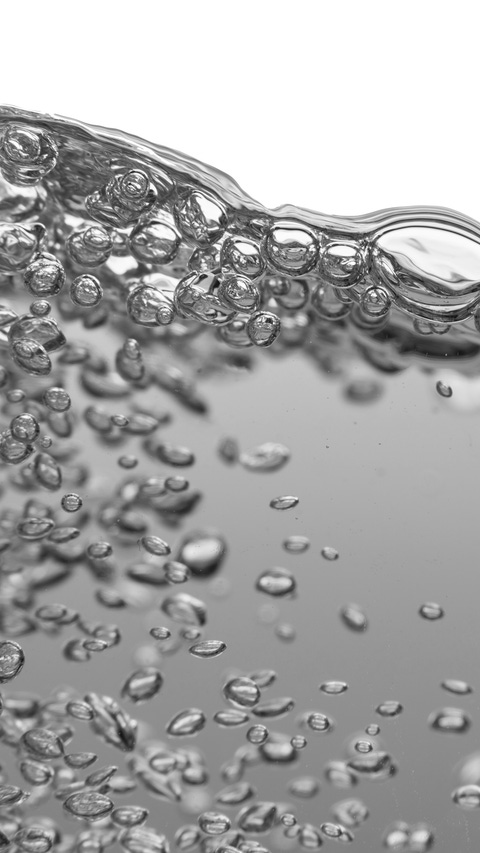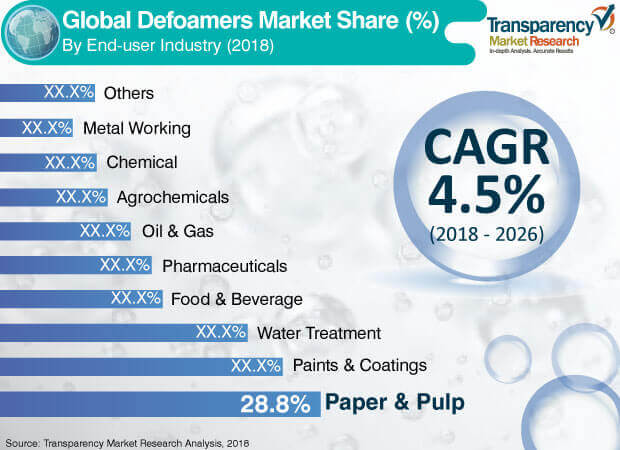The Importance of Defoamers in Industrial Processes and Applications
The Importance of Defoamers in Industrial Processes and Applications
Blog Article
Picking the Right Defoamer for Your Details Application Requirements
Selecting the proper defoamer for specific application requirements is a nuanced process that requires mindful consideration of numerous elements, such as the foam medium, operating, and kind problems. Comprehending the subtleties of defoamer efficiency-- including rate and perseverance-- while additionally accounting for ecological and regulative elements is important.
Comprehending Foam Development
Foam formation happens when gas is entraped within a liquid, creating a stable framework of bubbles. This sensation can significantly impact numerous industrial processes, especially in markets such as food production, pharmaceuticals, and wastewater treatment. The presence of foam can hinder mixing, minimize product high quality, and even cause functional inefficiencies.
Foam usually creates because of a combination of variables, including surface-active agents, anxiety, and the attributes of the liquid stage. Surfactants reduced the surface area stress of the fluid, assisting in the development of bubbles that can maintain and integrate. Frustration, whether from mechanical stirring or gas intro, improves bubble development, leading to enhanced foam quantity.
Understanding the auto mechanics of foam formation is vital for sectors intending to enhance their processes. By identifying the details problems that advertise foam generation, companies can apply strategies to reduce its impacts. This understanding lays the groundwork for selecting proper defoaming agents that efficiently target the unique challenges posed by foam in various applications. As a result, a detailed understanding of foam development is necessary for improving performance and preserving product stability across various sectors.
Kinds Of Defoamers Available
Different sorts of defoamers are readily available to deal with the challenges presented by foam in industrial applications. defoamers. Extensively classified, defoamers fall right into three groups: silicone-based, non-silicone-based, and natural defoamers
Silicone-based defoamers are renowned for their performance and security across a vast array of temperatures and pH levels. They are typically utilized in applications where strong foam suppression is essential, such as in adhesives, paints, and finishings. Their reduced surface area stress allows for rapid foam collapse.
Non-silicone-based defoamers, commonly made from natural substances, offer a choice for applications delicate to silicone residues. These defoamers can be more divided into polyether and ester types, each tailored to meet certain solution needs. Non-silicone defoamers are often made use of in food handling and individual treatment products as a result of their compatibility with different formulas.
All-natural defoamers, derived from plant or animal resources, are obtaining traction as a result of their environmentally friendly profile. These items are specifically appealing in applications where regulatory conformity and sustainability are critical, such as in agrochemicals and biotechnology.
Picking the best kind of defoamer is important for optimizing performance and ensuring compatibility with specific applications.
Key Application Considerations
When selecting a defoamer, it is vital to consider the particular application demands to guarantee optimal efficiency. defoamers. Various sectors have distinctive demands, such as food processing, drugs, or wastewater therapy, and each application may require one-of-a-kind defoaming buildings
Trick variables to review include the tool in which the defoamer will certainly be made use of, whether it is water-based, oil-based, or a combination thereof. The temperature level and pH degrees of the application can likewise significantly influence the performance of a defoamer. In addition, compatibility with other chemicals existing in the system is vital to stop unfavorable reactions that could endanger performance.
An additional essential factor to consider is the frothing actions of the certain system. Understanding whether the foam creates rapidly or gradually can direct the option of a defoamer that targets the origin cause effectively. The preferred speed of defoaming can influence the option, as some applications require fast action while others might tolerate slower defoaming processes.
Last but not least, regulatory and environmental factors to consider ought to not be forgotten, especially in industries with stringent conformity demands. Picking a defoamer that lines up with these factors ensures both effectiveness and safety and security in the application.

Efficiency Testing Approaches
Evaluating the efficiency of a defoamer calls for a systematic approach to screening that precisely gauges its performance in details applications. Different efficiency testing methods can be used to identify the optimum defoamer for an offered formula.
One common approach is the bubble test, which evaluates the defoamer's capacity to decrease foam quantity over time. This test entails generating a secure foam and then adding the defoamer to observe the rate of foam collapse.

Eventually, selecting the suitable efficiency screening approach relies on the certain application and the kind of foam being attended to. Each technique uses valuable information that can guide formulation adjustments and enhance the effectiveness of the recommended you read defoamer in useful applications.
Best Practices for Choice


Next, think about the defoamer's performance in terms of speed of action and determination. A quick-acting defoamer might be essential for processes where rapid foam suppression is important, while an extra persistent formulation might be required for prolonged foam control. Additionally, assess the environmental effect of the defoamer, including its biodegradability and any regulative compliance demands.
Conduct trials with selected defoamers to establish their performance in real-world problems. This action is crucial to confirm that the selected item satisfies efficiency expectations. Seek advice from with producers or distributors for technological assistance and assistance, as they can provide beneficial insights into item formulas and application techniques. By sticking to these finest practices, you can boost foam control effectiveness and guarantee the durability of your processes.
Final Thought
In summary, selecting the proper defoamer demands an look at this website extensive analysis of various elements, including foam type, medium, operating problems, and ecological considerations. Comprehending the special characteristics of foam formation and the available defoamer choices is vital.
Selecting the proper defoamer for particular application demands is a nuanced procedure that requires careful consideration of multiple factors, such as the foam type, tool, and operating conditions.Choosing the best defoamer is crucial for achieving optimal performance in foam control applications. A quick-acting defoamer may be necessary for procedures where quick foam reductions is essential, while an extra relentless Read Full Report formulation might be needed for long term foam control.In recap, choosing the suitable defoamer requires a thorough assessment of various aspects, including foam type, tool, operating problems, and ecological factors to consider. Comprehending the unique qualities of foam development and the available defoamer alternatives is critical.
Report this page